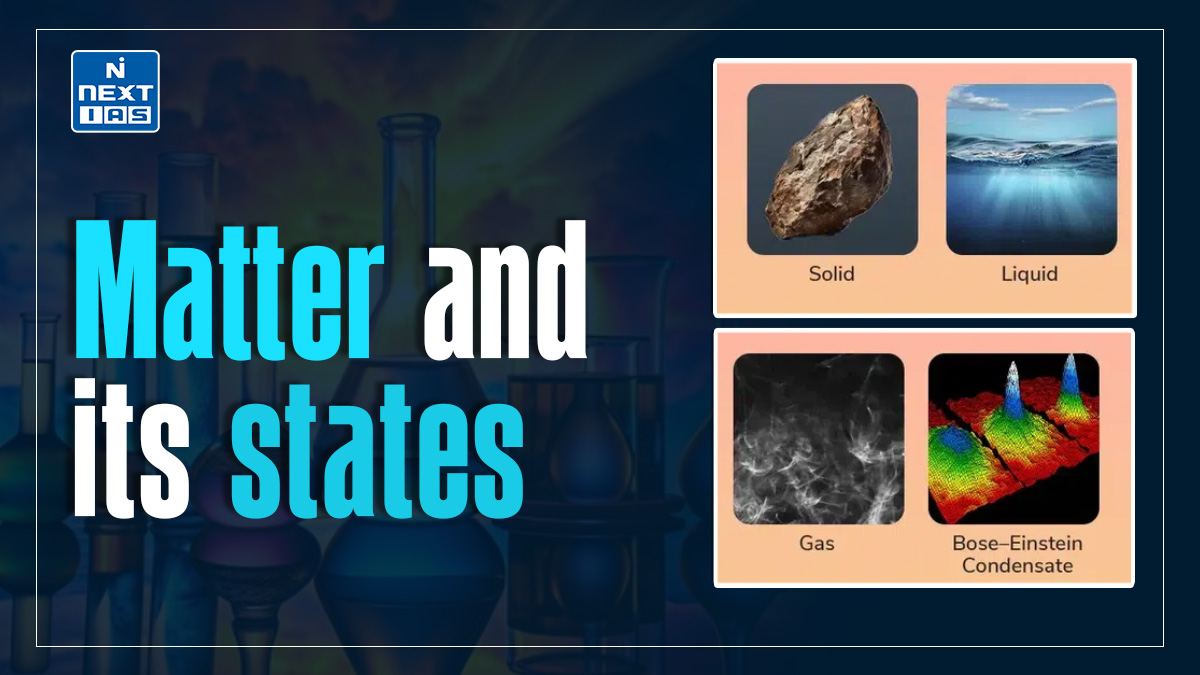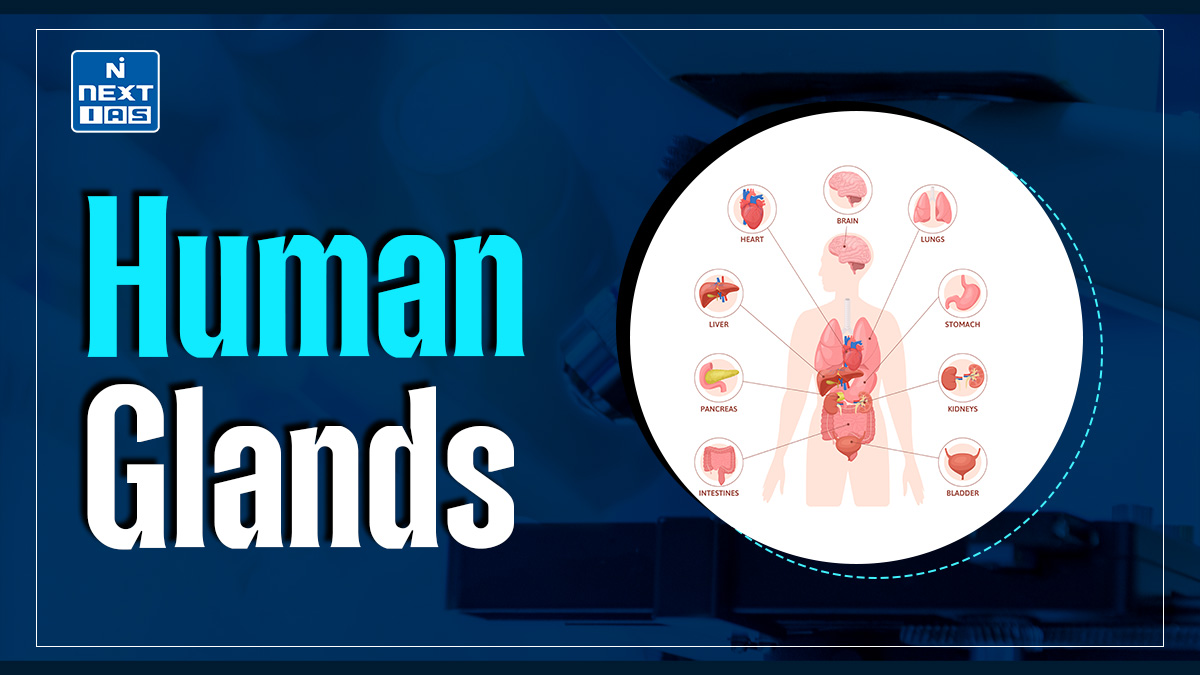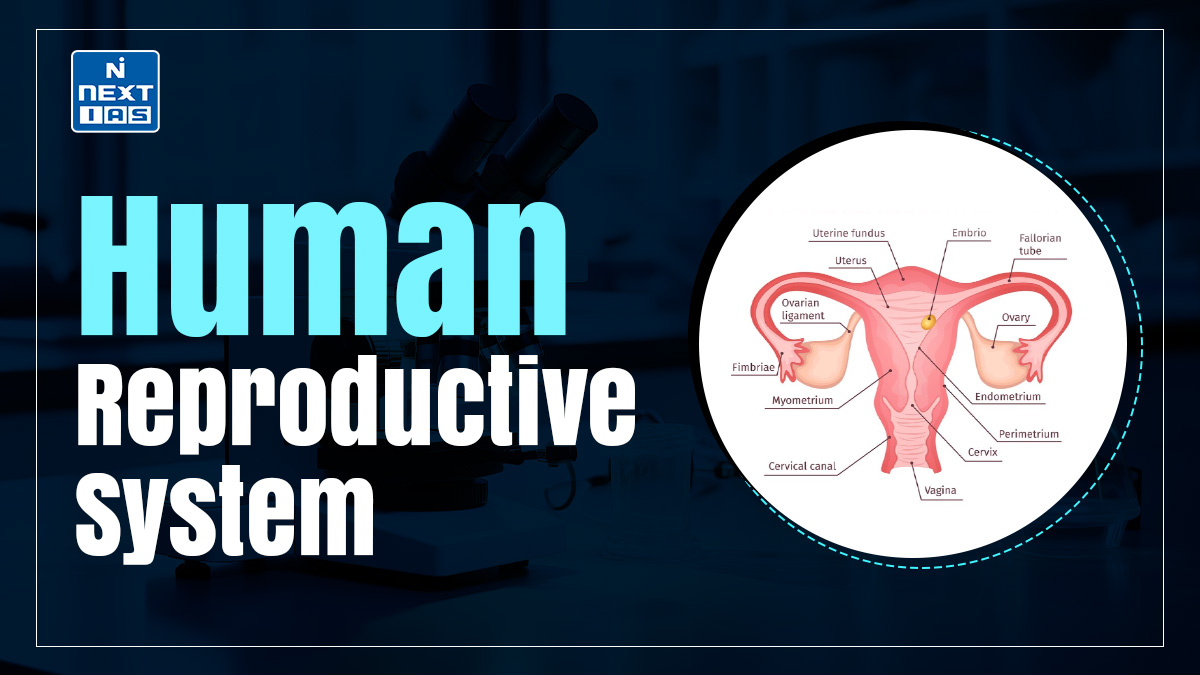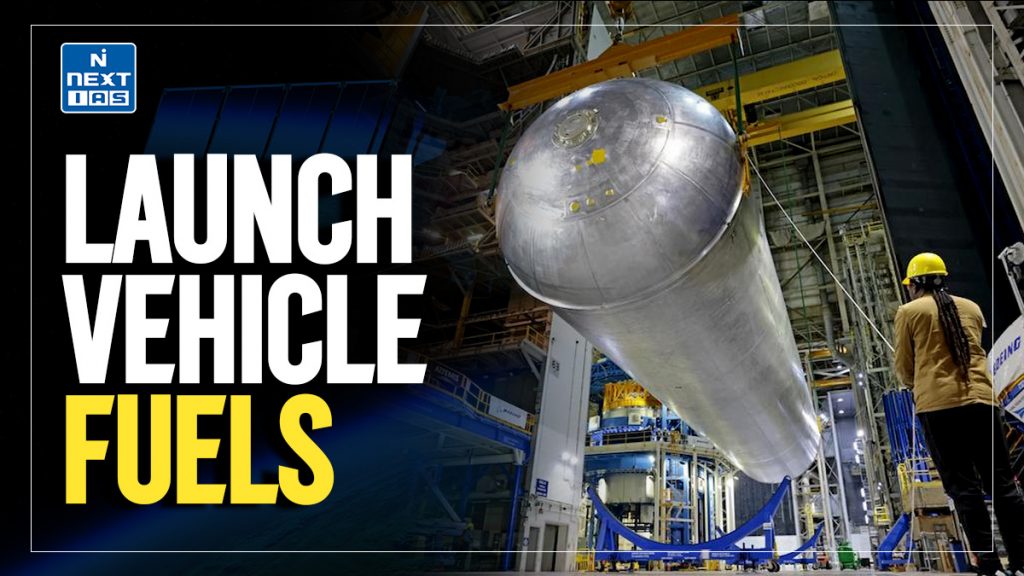
Launch vehicle fuels, also known as propellants, provide the energy needed to propel rockets into space. These fuels are typically classified into solid, liquid, hybrid, and cryogenic propellants, each with unique characteristics. Their selection depends on mission requirements, with a focus on achieving high thrust, stability, and efficient performance during launch.
About the Launch Vehicle Fuels
- Launch vehicle fuels, or propellants, are critical for powering rockets into space. They are broadly categorized into solid, liquid, hybrid, and cryogenic fuels.
- Solid fuels, like ammonium perchlorate, offer simplicity and reliability.
- Liquid fuels, such as liquid hydrogen with liquid oxygen (LOX), provide high efficiency and are used in advanced stages.
- Hybrid fuels combine aspects of both solid and liquid propellants, offering better control.
- Cryogenic fuels, stored at extremely low temperatures, are used for missions requiring high thrust, such as geostationary launches.
- The choice of fuel depends on mission needs, cost, and performance requirements, balancing energy, stability, and safety.
Types of Launch Vehicle Fuels
- Solid Propellants:
- Made of fuel and oxidizer in a solid state (e.g., Ammonium Perchlorate Composite Propellant).
- Simple and reliable, but lack control after ignition.
- Example: Used in boosters like PSLV’s first stage.
- Liquid Propellants:
- Separate fuel (e.g., Kerosene or Liquid Hydrogen) and oxidizer (e.g., Liquid Oxygen).
- Offer better control through throttle and shutdown capabilities.
- Example: Saturn V’s first stage used RP-1 (refined kerosene) and LOX.
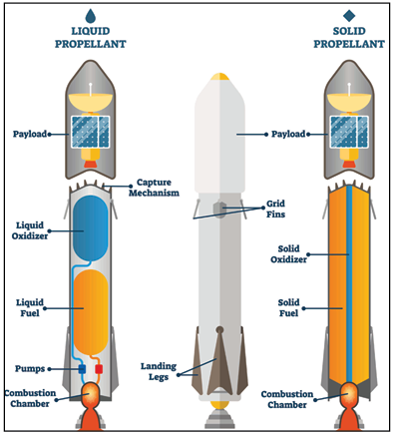
- Cryogenic Propellants:
- Extremely cold liquid fuels like Liquid Hydrogen (LH2) and Liquid Oxygen (LOX).
- Provide high efficiency, used for upper stages and interplanetary missions.
- Example: GSLV’s upper stage uses cryogenic propellant.
- Hypergolic Propellants:
- Fuel and oxidizer ignite spontaneously on contact (e.g., Hydrazine and Nitrogen Tetroxide).
- Used in satellite thrusters and spacecraft due to reliability in space.
- Example: Apollo’s Lunar Module descent engine.
- Hybrid Propellants:
- Combine a solid fuel with a liquid or gaseous oxidizer.
- Offer better control than solid propellants with simpler design than liquid engines.
- Example: Used in some experimental rockets.
- There are 2 stages in a hybrid propulsion: solid propulsion and liquid propulsion.
- This kind of propulsion compensates the disadvantages of both propulsion systems and has the combined advantage of 2 propulsion systems.

Advantages of Different Launch Vehicle Fuels
- Solid Propellants:
- Simple and Reliable: Few moving parts reduce complexity and chances of failure.
- Long Storage Life: Stable and storable for long periods without degradation.
- High Thrust: Ideal for initial stages or boosters during liftoff.
- Liquid Propellants:
- Thrust Control: Can be throttled, shut down, or reignited as needed.
- High Efficiency: Provide better specific impulse compared to solid fuels.
- Versatile: Suitable for a wide range of missions, from liftoff to orbit insertion.
- Cryogenic Propellants:
- High Energy Density: Provide superior performance for upper stages and heavy payloads.
- Essential for Deep Space Missions: Used in interplanetary missions due to high efficiency.
- Reusable Potential: Found in modern reusable rockets like SpaceX’s Raptor engines.
- Hypergolic Propellants:
- Instant Ignition: Ignites spontaneously, making it reliable for spacecraft thrusters.
- Operates in Vacuum: Works efficiently in space without complex ignition systems.
- Precise Maneuvering: Ideal for satellite adjustments and deep space missions.
- Hybrid Propellants:
- Improved Control: Offers better flexibility than solid fuels with simpler design than liquid engines.
- Safer Storage: Less hazardous compared to fully liquid propellant systems.
- Cost-Effective: Useful for experimental and smaller rockets.
Disadvantages of Launch Vehicle Fuels
- Solid Propellants:
- Limited Control: Cannot be throttled or shut down once ignited.
- Lower Efficiency: Less specific impulse compared to liquid fuels.
- Storage Issues: Tend to degrade over time and are difficult to store safely.
- Liquid Propellants:
- Complex Handling: Requires intricate plumbing and pumps.
- Highly Volatile: Poses safety risks during fueling and launch.
- Storage Challenges: Cryogenic liquids must be kept at extremely low temperatures.
- Cryogenic Propellants:
- Temperature Constraints: Require specialized insulation and cooling systems.
- Boil-off Issues: Fuel may evaporate over time, limiting storage duration.
- Costly Infrastructure: Expensive equipment needed for storage and handling.
- Hypergolic Propellants:
- Toxic and Hazardous: Extremely dangerous to handle, posing health risks.
- Environmental Impact: Releases toxic byproducts during combustion.
- High Maintenance: Requires strict safety protocols for storage and use.
- Hybrid Propellants:
- Limited Performance: Lower efficiency compared to liquid propellants.
- Design Complexity: Difficult to optimize the interaction between solid and liquid components.
- Slow Development: Still less mature compared to other propulsion systems.
Way Forward
- The future of launch vehicle fuels focuses on improving efficiency, sustainability, and safety. Advancements in green propellants, such as liquid methane and biofuels, aim to reduce environmental impact. Reusable rockets with enhanced fuel efficiency will further lower launch costs.
- Research into electric and nuclear propulsion could revolutionize deep-space missions. Innovations in cryogenic storage and refueling in space will support longer missions and reduce boil-off losses.
- Hybrid engines with better control and high-thrust capabilities are under development.
- The integration of automation and safety technologies will also minimize risks, ensuring reliable and eco-friendly space exploration in the years to come.
Conclusion
- Launch vehicle fuels play a pivotal role in space exploration and satellite deployment, each type offering distinct advantages and challenges. Solid, liquid, cryogenic, hypergolic, and hybrid propellants each serve specific mission requirements, balancing factors like efficiency, control, safety, and environmental impact. While advancements in technology continue to improve fuel performance and reduce costs, issues such as toxicity, handling complexities, and storage constraints remain significant considerations.
- As the aerospace industry evolves, ongoing research and development will be crucial in optimizing launch vehicle fuels, enhancing safety, and enabling more ambitious missions, ultimately expanding humanity’s capabilities in space exploration.
Frequently Asked Questions (FAQs)
Which fuel is used in Chandrayaan 3?
Chandrayaan-3 primarily utilizes a combination of Liquid Propellant Systems, specifically using Liquid Oxygen (LOX) and Liquid Hydrogen (LH2) for its propulsion. These fuels are employed in the lander’s and propulsion module’s engines, providing the necessary thrust for maneuvers during its journey and landing on the lunar surface.
Which solid fuel is used in a launch vehicle?
Chandrayaan-3’s launch vehicle, the LVM-3 (Launch Vehicle Mark-3), uses a solid fuel called HTPB (Hydroxyl-terminated polybutadiene) as part of its Solid Rocket Boosters (SRBs). HTPB is known for its high energy output and stability, providing the necessary thrust during the initial phase of the launch.
Which fuel is used in PSLV?
The Polar Satellite Launch Vehicle (PSLV) uses a combination of solid and liquid fuels. The first stage employs a solid fuel called HTPB (Hydroxyl-terminated polybutadiene) for its Solid Rocket Motors (SRMs). The second stage uses a liquid fuel, a mixture of UDMH (Unsymmetrical Dimethylhydrazine) and N2O4 (Nitrogen Tetroxide), serving as the oxidizer. This combination allows the PSLV to effectively deliver payloads into polar orbits.
What is the fuel used in GSLV?
– The Geosynchronous Satellite Launch Vehicle (GSLV) utilizes a combination of solid and liquid fuels. The first stage of the GSLV employs solid fuel in its Solid Rocket Boosters (SRBs), typically made from HTPB (Hydroxyl-terminated polybutadiene).
– The second stage uses liquid fuel, specifically a mixture of UDMH (Unsymmetrical Dimethylhydrazine) as the fuel and N2O4 (Nitrogen Tetroxide) as the oxidizer.
– The third stage features a cryogenic upper stage that uses Liquid Hydrogen (LH2) as fuel and Liquid Oxygen (LOX) as the oxidizer, enabling it to place heavier payloads into geostationary orbits.
What solid propellant is used in the GSLV?
The Geosynchronous Satellite Launch Vehicle (GSLV) uses a solid propellant known as HTPB (Hydroxyl-terminated polybutadiene) in its Solid Rocket Boosters (SRBs). This propellant is known for its high energy density and stability, providing the necessary thrust during the initial phase of the launch to help lift the vehicle into space.
Which fuel is used in ASLV?
– The Augmented Satellite Launch Vehicle (ASLV) primarily uses solid and liquid fuels. The first stage utilizes a solid propellant known as HTPB (Hydroxyl-terminated polybutadiene) for its Solid Rocket Motors (SRMs).
– The second stage employs liquid fuel, specifically a mixture of UDMH (Unsymmetrical Dimethylhydrazine) as fuel and N2O4 (Nitrogen Tetroxide) as the oxidizer. This combination allows the ASLV to effectively launch payloads into low Earth orbit.
Which propellant is used in PSLV?
The Polar Satellite Launch Vehicle (PSLV) uses a combination of solid and liquid propellants. The first stage is powered by solid propellant known as HTPB (Hydroxyl-terminated polybutadiene), while the second stage utilizes a liquid propellant combination of UDMH (Unsymmetrical Dimethylhydrazine) as the fuel and N2O4 (Nitrogen Tetroxide) as the oxidizer. This hybrid propulsion system enables the PSLV to efficiently deliver satellites into polar orbits.
Further Reading: Chandrayaan 3
GS - 3
